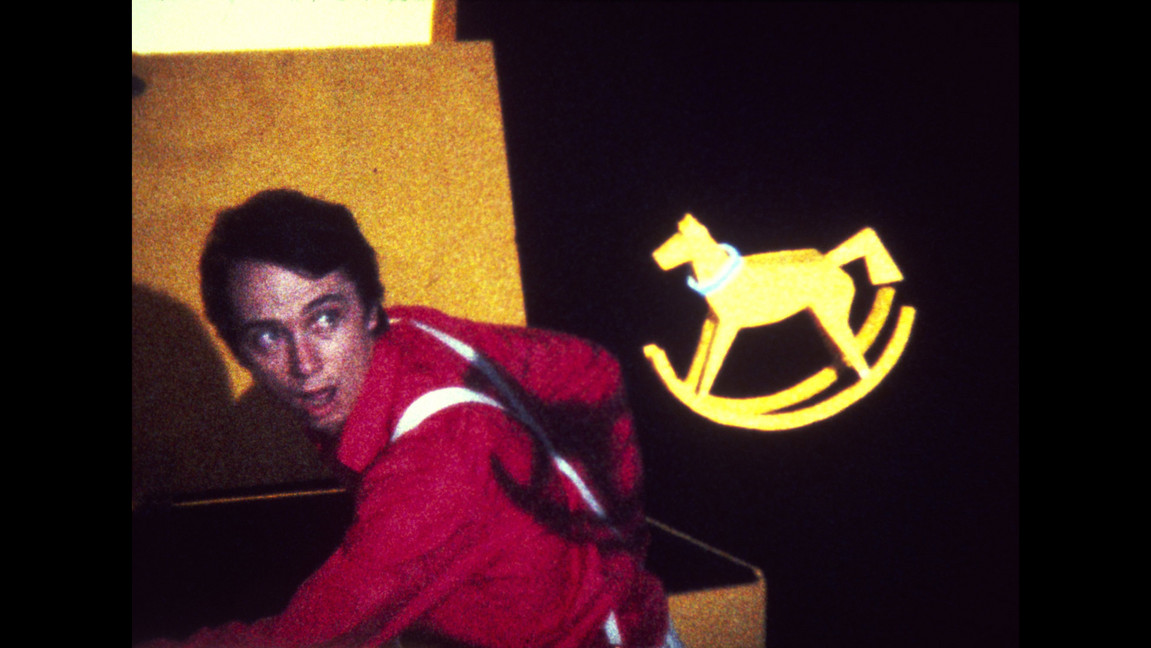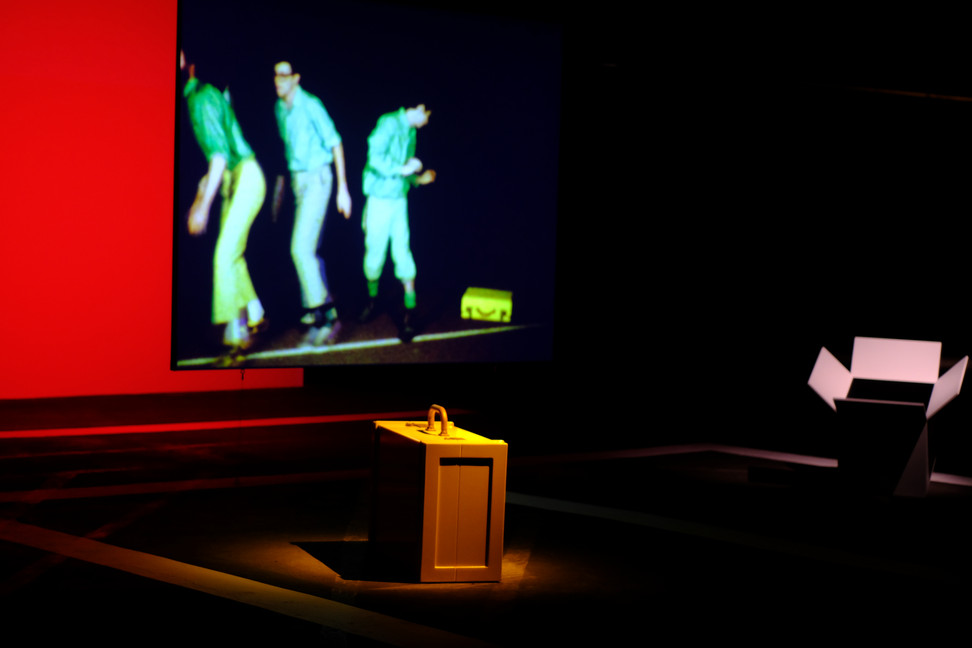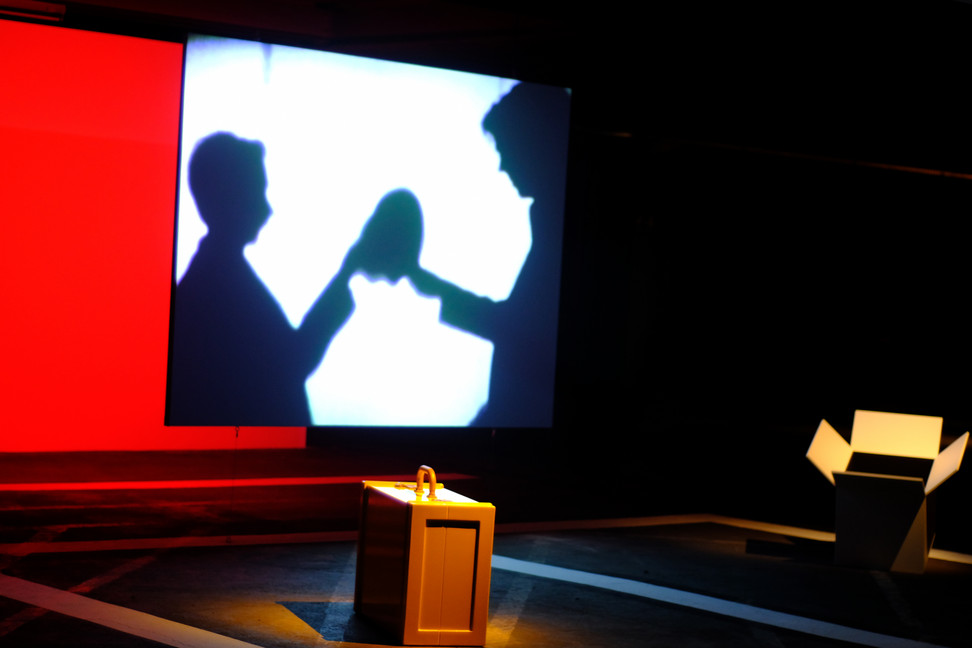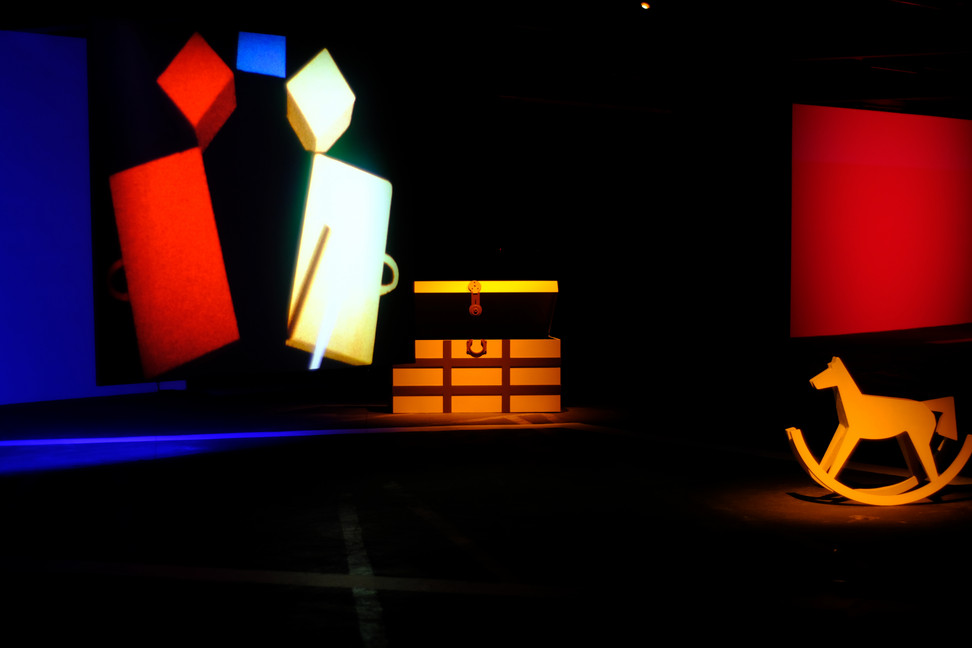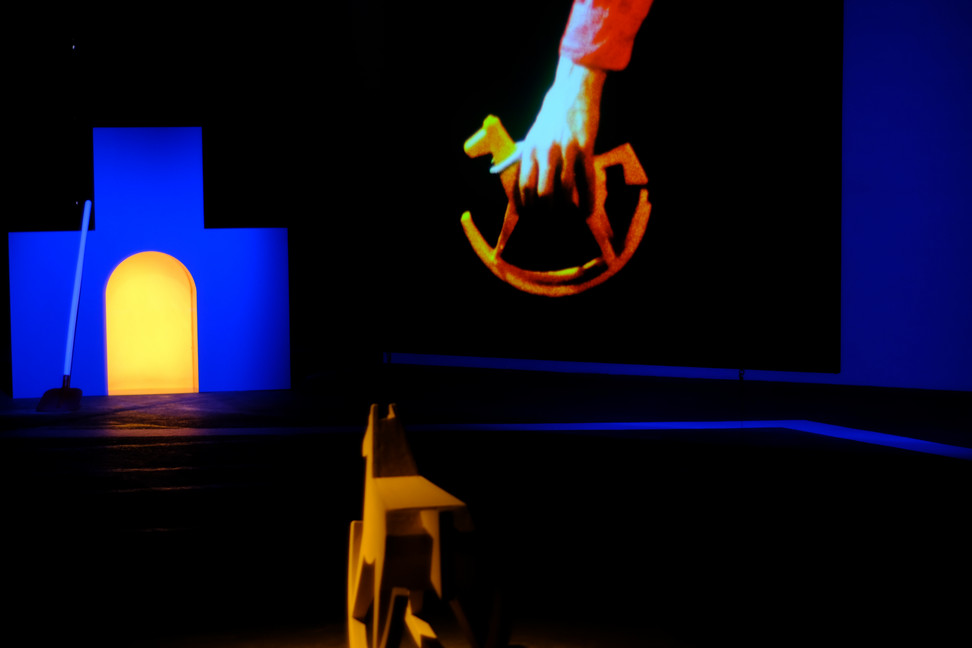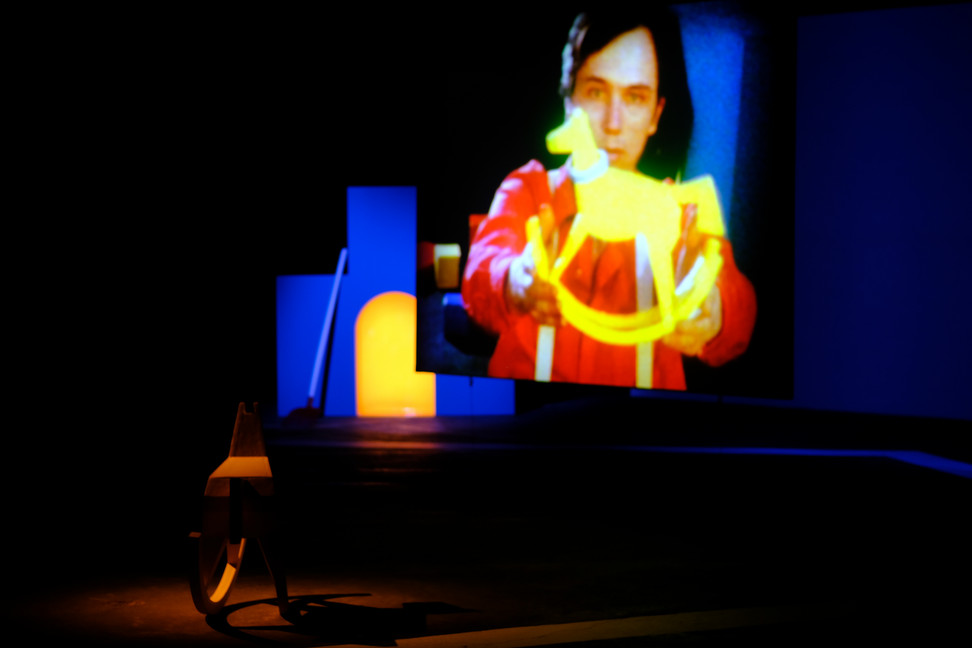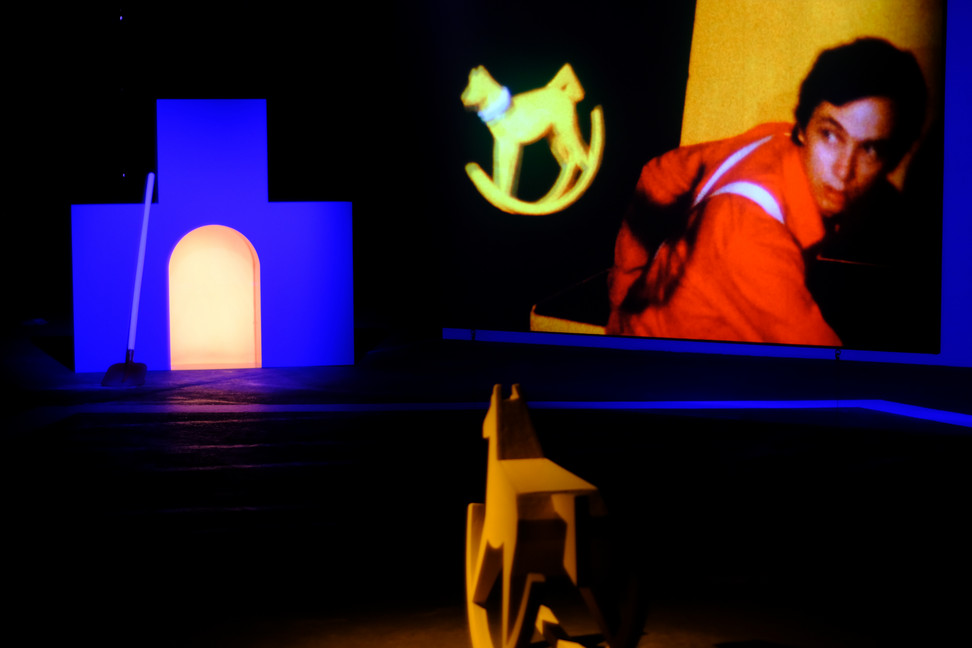Ericka Beckman
Super-8 Trilogy (We Imitate; We Break Up, The Broken Rule, Out of Hand)
1978–1981
Super 8 to 16mm to HD file
Sequenced lighting and sculptural props, 80'
Ed. 1/1 (+ 1 AP)
Between 1978 and 1981, Ericka Beckman created a landmark suite of experimental films. Known as The Super-8 Trilogy, these films are among the most iconic and original works of the Pictures Generation. Featuring herself, and a cast of artist-friends (including James Welling, Matt Mullican, and Mike Kelley), her work is informed by Swiss psychologist Jean Piaget’s theories on the cognitive development of children, the culture of televised sports, as well as the heyday of Metro-Goldwyn-Mayer’s musicals. The films We Imitate; We Break Up (1978), The Broken Rule (1979), and Out of Hand (1981) are not based on dialogues or a classical narrative structure, but on dream-like choreographed movements, songs, keyed-up colours, and special effects.
Ericka Beckman
We Imitate; We Break Up, 1978
Super 8 transferred to 16mm, 30'
Part of the Super-8 Trilogy
Ericka Beckman
The Broken Rule, 1979
Super 8 transferred to 16mm, 19'
Part of the Super-8 Trilogy
Ericka Beckman
Out of Hand, 1981
Super 8 transferred to 16mm, 25'
Part of the Super-8 Trilogy
Ericka Beckman
You The Better, 1983/2015
16mm to HD, 30'
Ed. 7/8 (+1 AP)
You The Better 1983 features Ashley Bickerton among a team of uniformed players who take on ‘House’ in casino games resembling roulette or the rolling dice game, ‘craps’. These competitive activities, motivated by a desire for wealth and based on the rules of chance, are played out on courts designed on the repetitious forms of suburban sprawl, dark claustrophobic spaces that emphasise quotidian anxiety.
Ericka Beckman
Cinderella, 1986
16mm to HD, 30'
Ed. 7/8 (+ 1 AP)
Cinderella is a musical treatment of the fairy tale. Ericka Beckman has broken apart the story and set it as a mechanical game with a series of repetitions where Cinderella is projected back and forth like a ping-pong ball between the hearth and the castle. She never succeeds in satisfying the requirements of the ‘Cinderella Game’.
Ericka Beckman
Hiatus, 1999/2015
Dual Screen Installation with sequenced lighting in frames, 20'16''
Ed. 3/8 (+ 1 AP)
Hiatus features a woman playing a VR interactive game with logged-on game players and game identities, which confuse and trick her into consciousness. In this game, MADI, a female player, enters Level One, where the player has been asked to create a habitat that she feels most comfortable in, that she has complete control over and which empowers her. MADI creates a “virtual garden” and a construct of herself (called WANDA) to move around in his world.
In Level Two she enters an “identity game” using technological power for the benefit of the entire community rather than her own gain. Here she encounters an adversary, “WANG,” who threatens her field, property, and power with his own aggressive and expanding encoded architecture.
Ericka Beckman / Mike Kelley
Blind Country, 1989
HD file, 18'
Ed. 3/8 (+ 1 AP)
The collaborative video project between Mike Kelley and Ericka Beckman is based on a short story by H.G. Wells The Country of the Blind – about a man who travels to a country of blind people and attempts to dominate their sensual, feminine culture with his male, sight-derived power. Following this theme, Blind Country begins with animated fruit dancing over Mike Kelley’s body and the admonition of “Northerners” to “refill the quickly emptying sack.” In the male-dominated land of the North, candy-spurting pinatas stand as phallic symbols. Presumably castrated, and stripped of his authority, Kelley acts the buffoon as he is led through the murky land of the South, a “female,” earthy, "realm of the senses" opposing the phallocentric world of the North.
Ericka Beckman
Switch Center, 2003
16mm and DCP, 11'20''
Single screen with monolith
Ed. 7/8 (+ 1 AP)
For her film Switch Center, Ericka Beckman chose an abandoned water purification plant on the outskirts of Budapest as the setting. The film is based on Leger's early avant-garde film Ballet Mechanic. In her film, the structure itself comes to life through the manipulations of the employees who work inside it. It's a tribute to the futuristic pragmatism expressed by the Soviet Modernist buildings that are now being razed to allow space for shopping malls and corporate offices.
Ericka Beckman
Tension Building, 2017
16mm to HD, Single channel, 15'
1/8 (+ 1 AP)
Tension Building is a composite of linked architectural spaces, some are real and some are models. It combines stop motion and live action filmmaking shot at the Harvard University Coliseum in Boston (1935) and the Municipal Stadium in Florence (1932), built in by Luigi Nervi. It features Boston Symphony Orchestra percussionist Richard Flanagan, and the U Mass Minute Man Marching Band. In this film, Ericka Beckman uses the camera like a surveyor's transit and created some rules for its path around the stadium.
Ericka Beckman
Reach Capacity, 2020
16mm to HD file, 15'
With installation, sculptural elements and a motorized rotating screen
Ed. 1/2
Combining mechanical musical numbers, digital objects, and board-game parameters, Ericka Beckman converts in Reach Capacity lower Manhattan into a giant Monopoly board on which real estate speculators and contracted labor compete for dominance in a programmatic dance.

